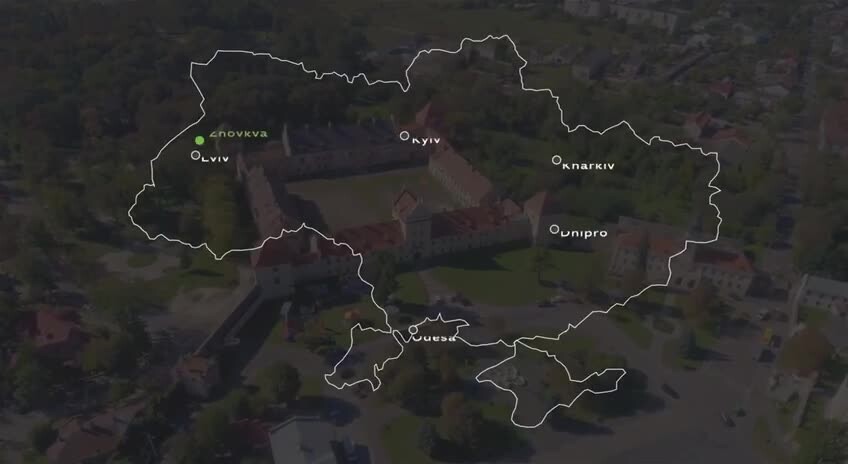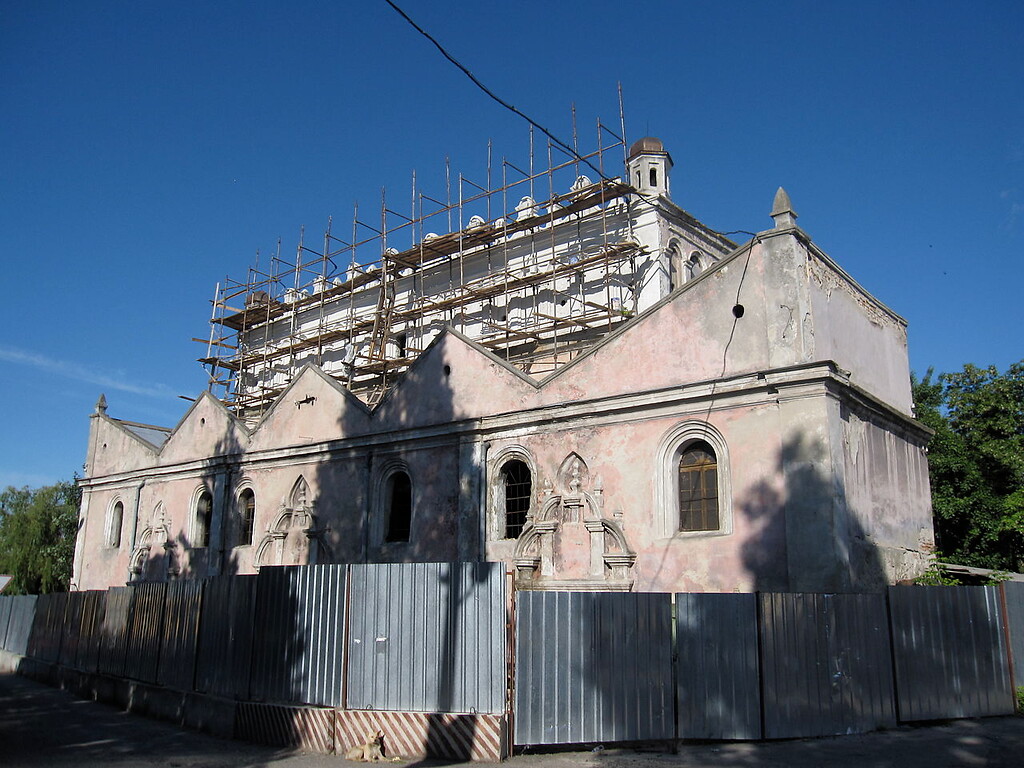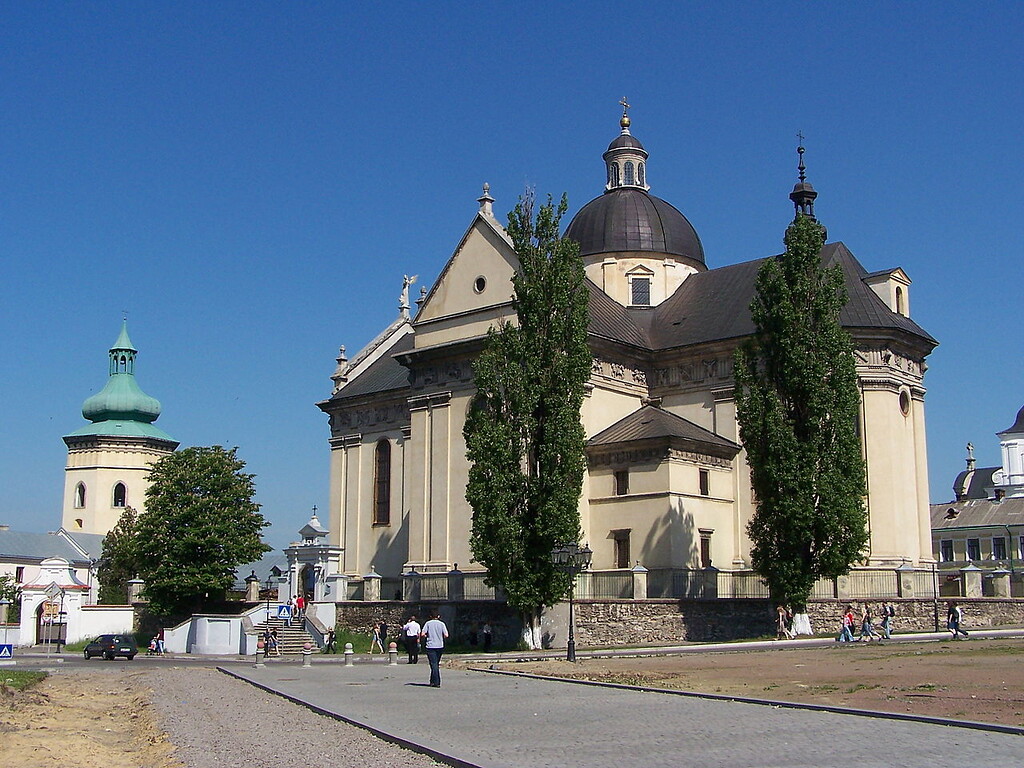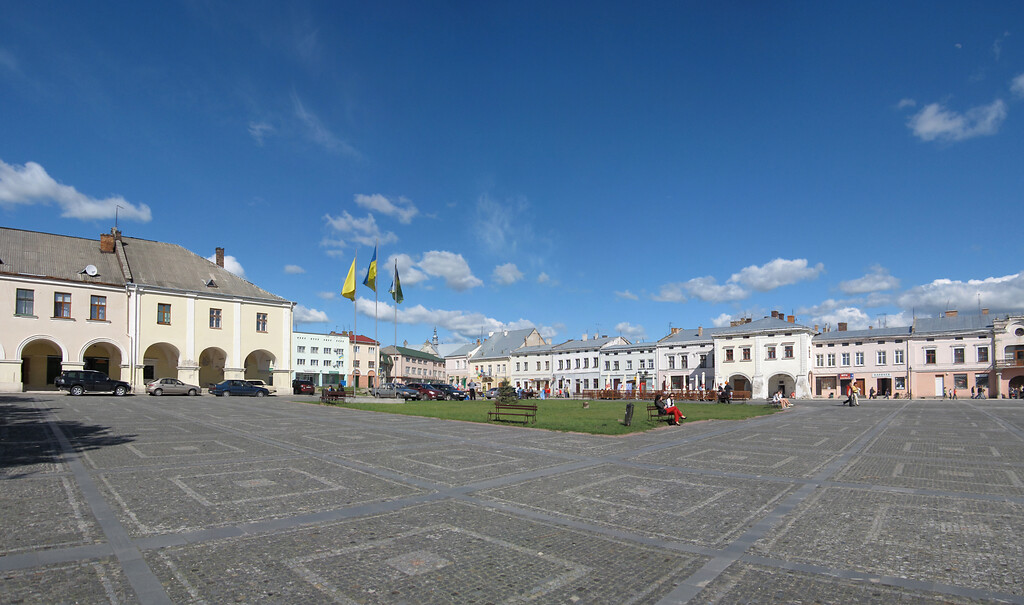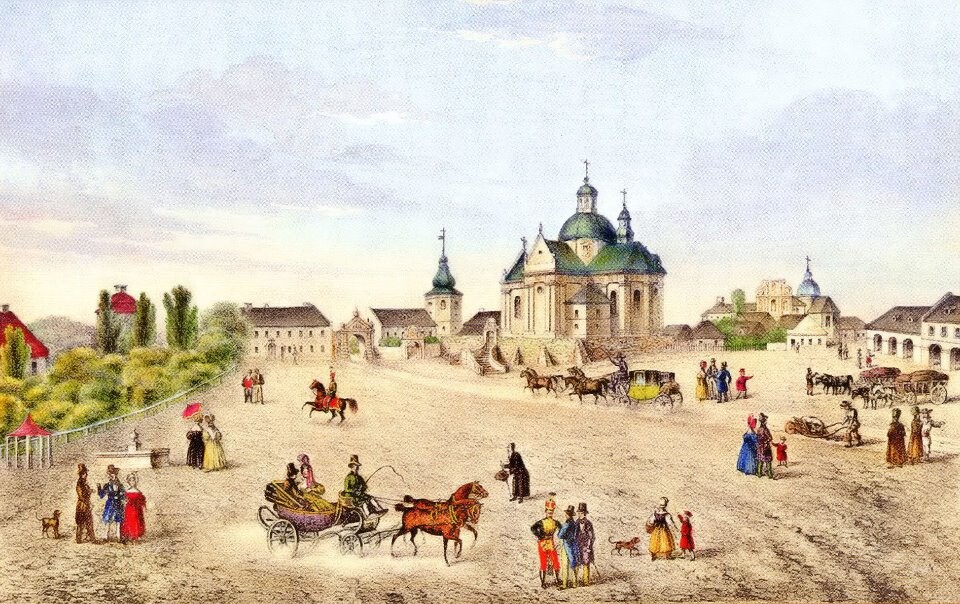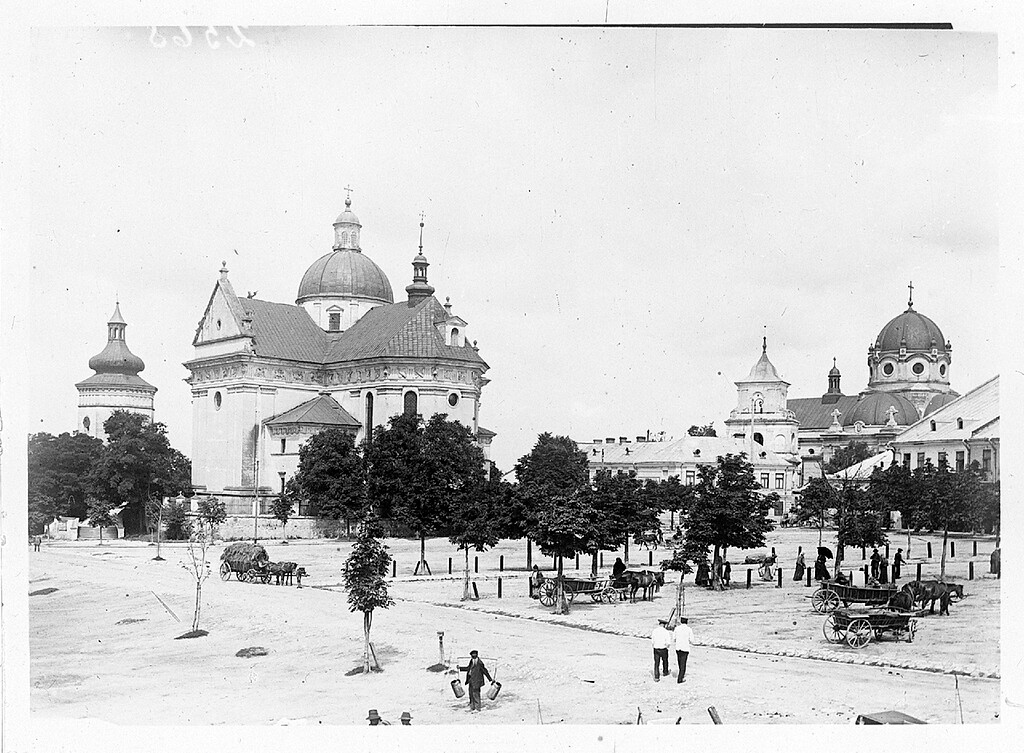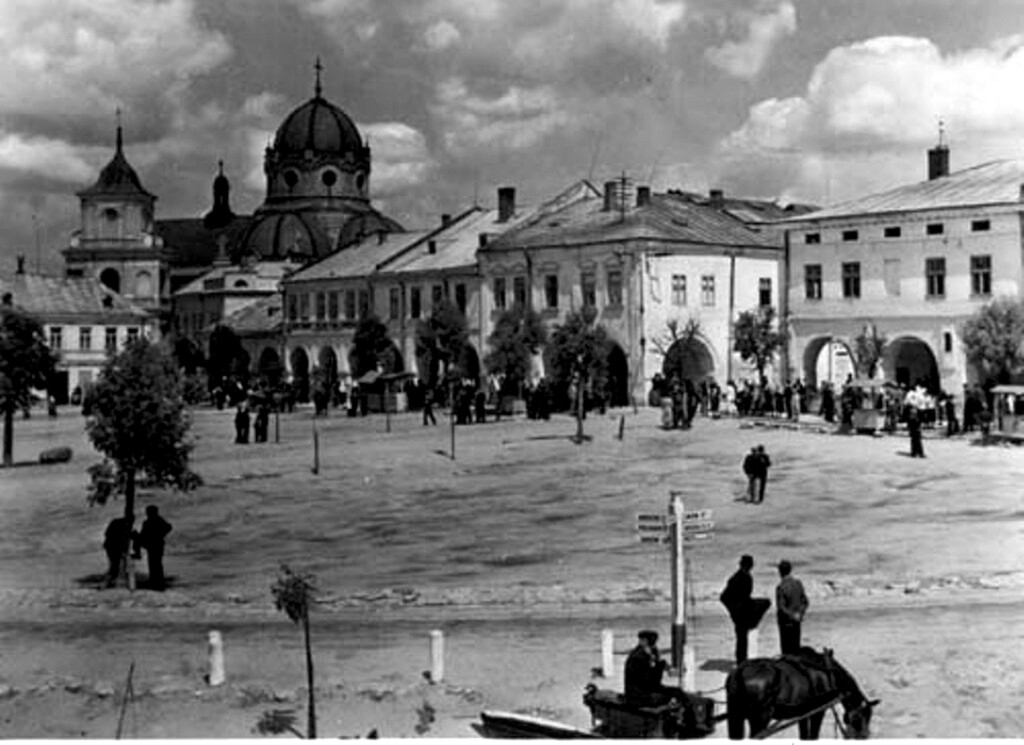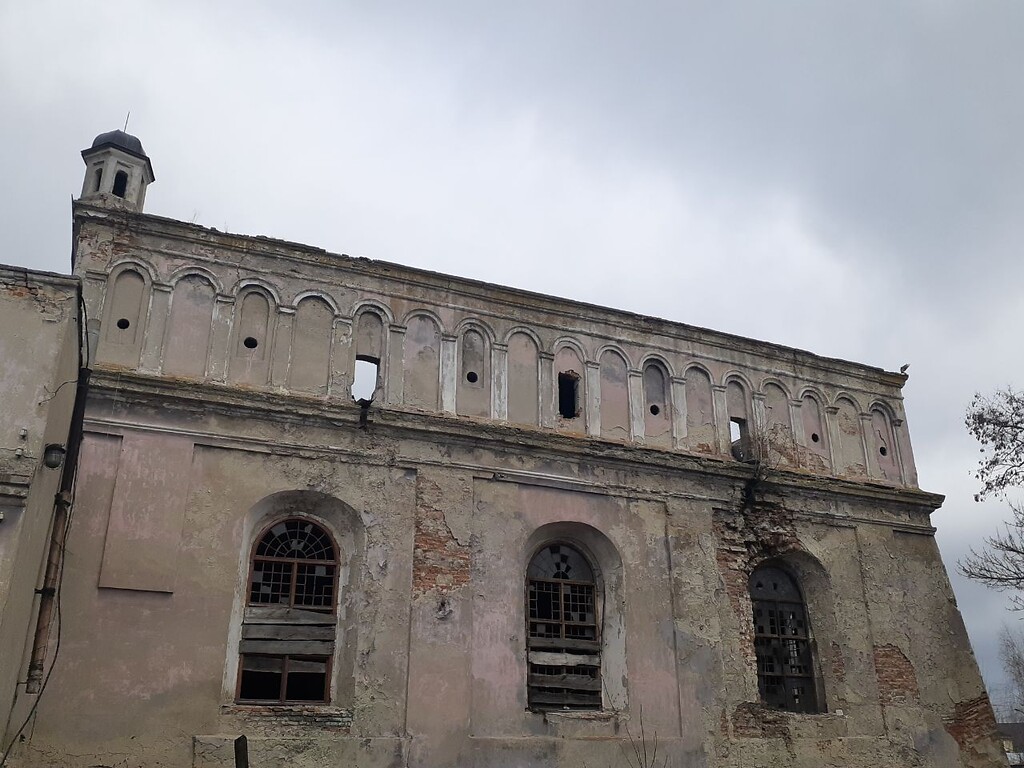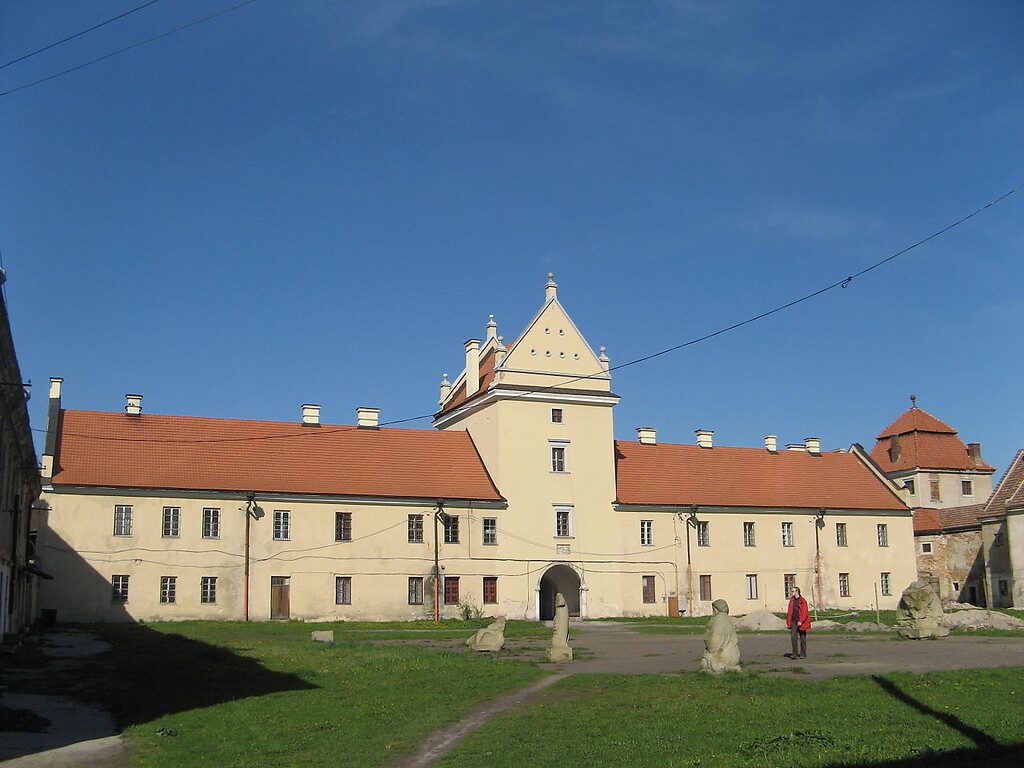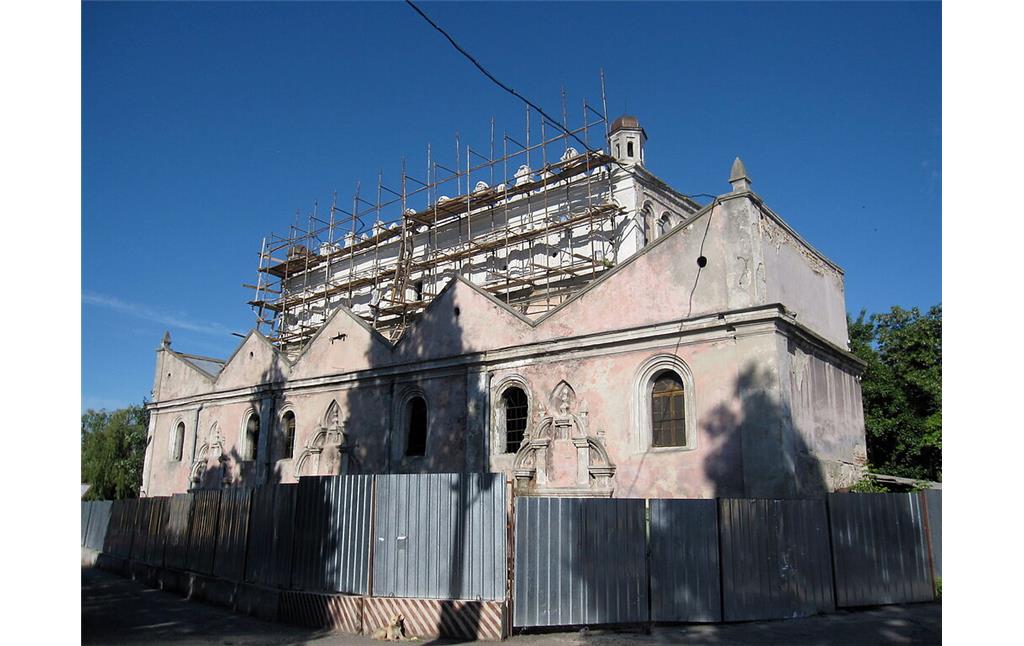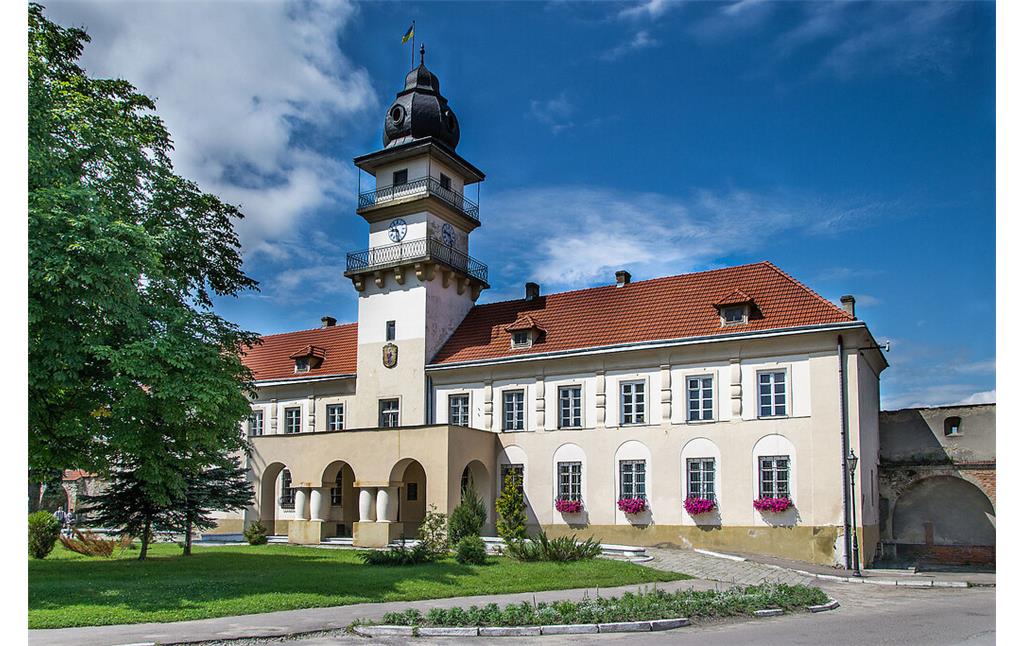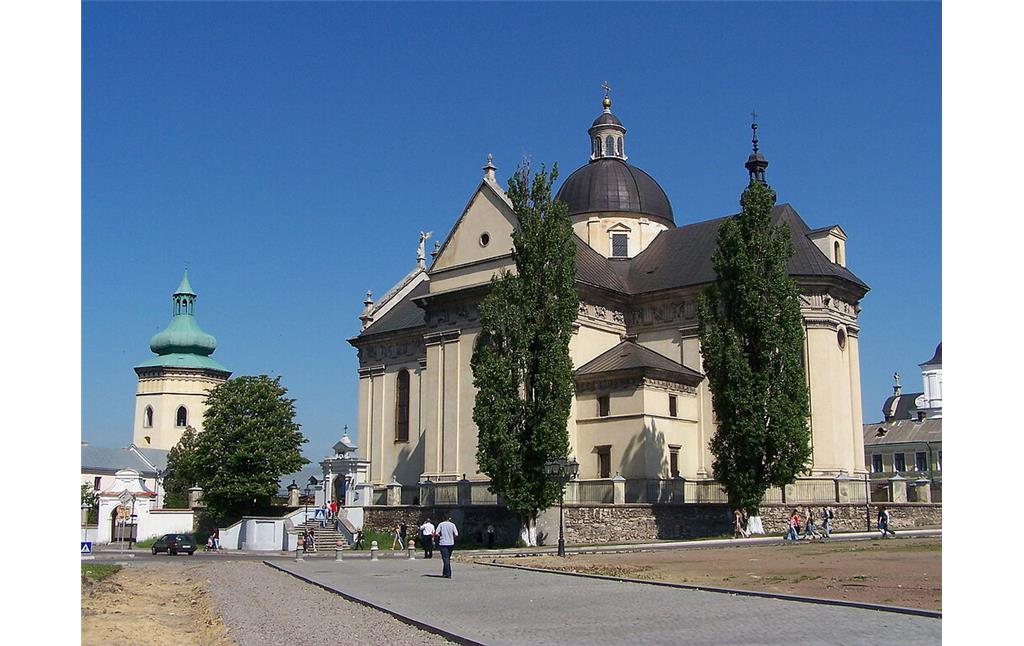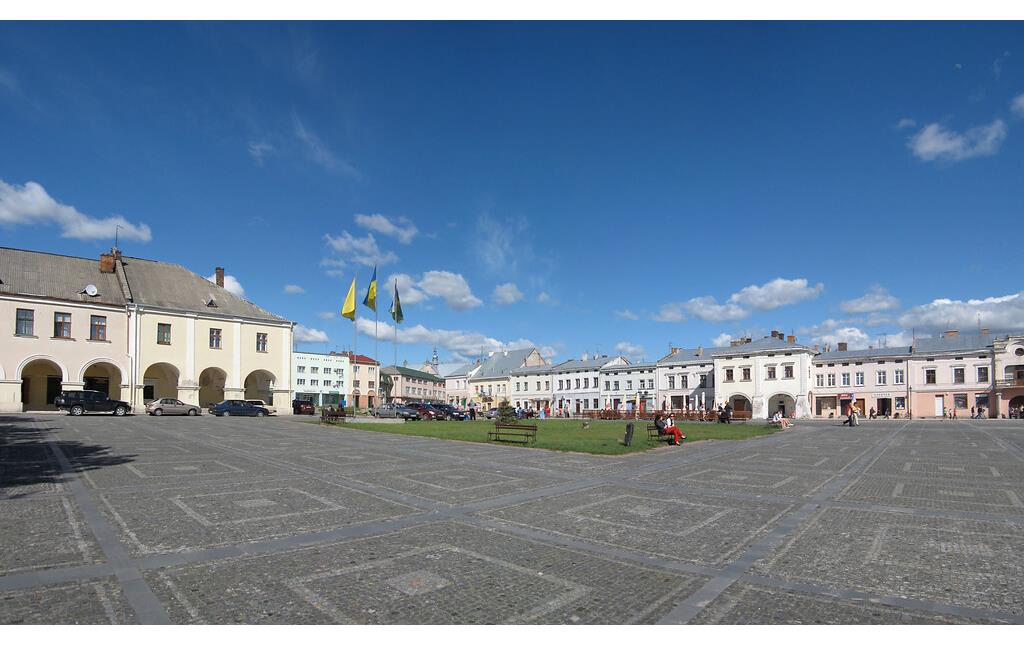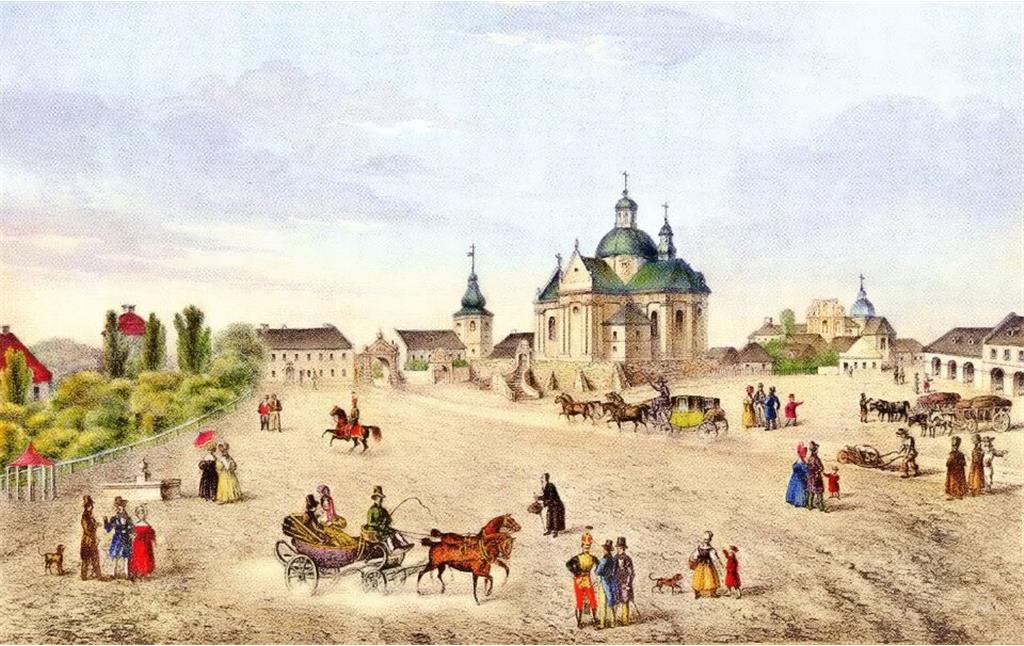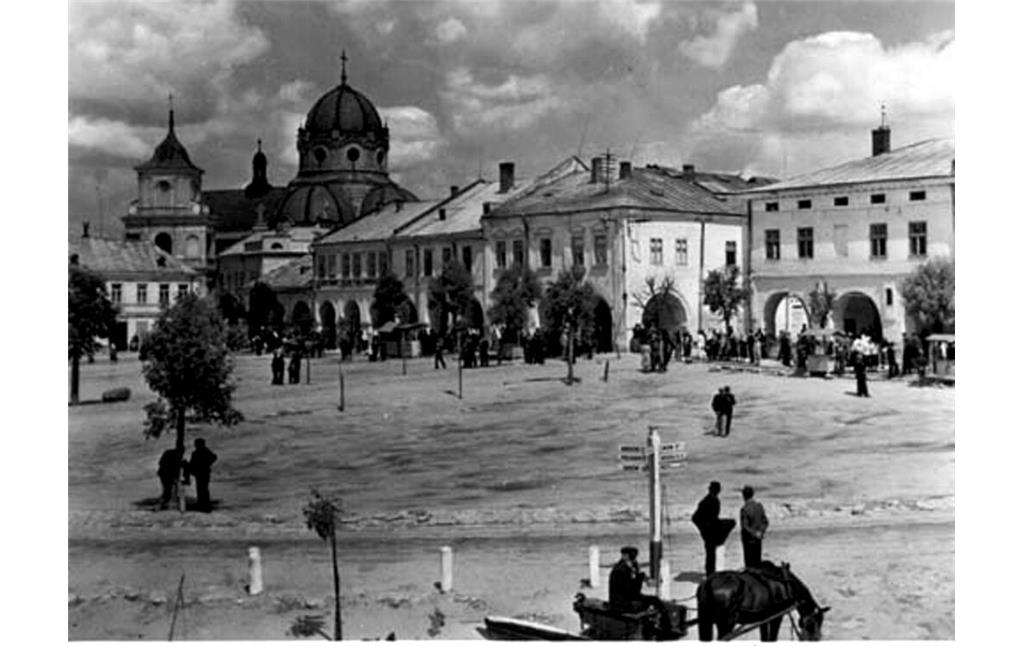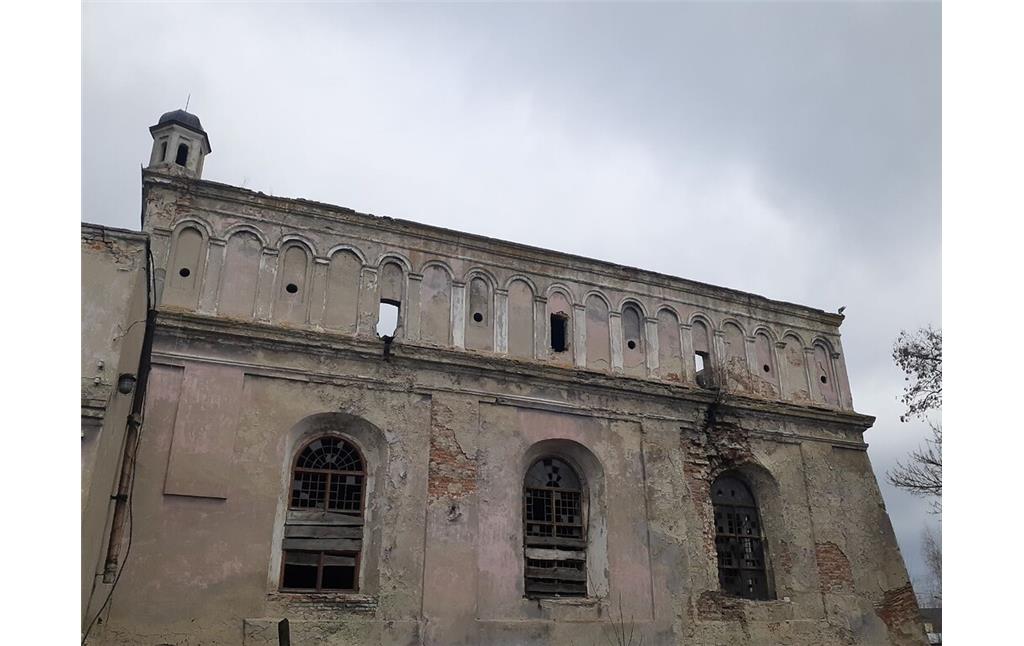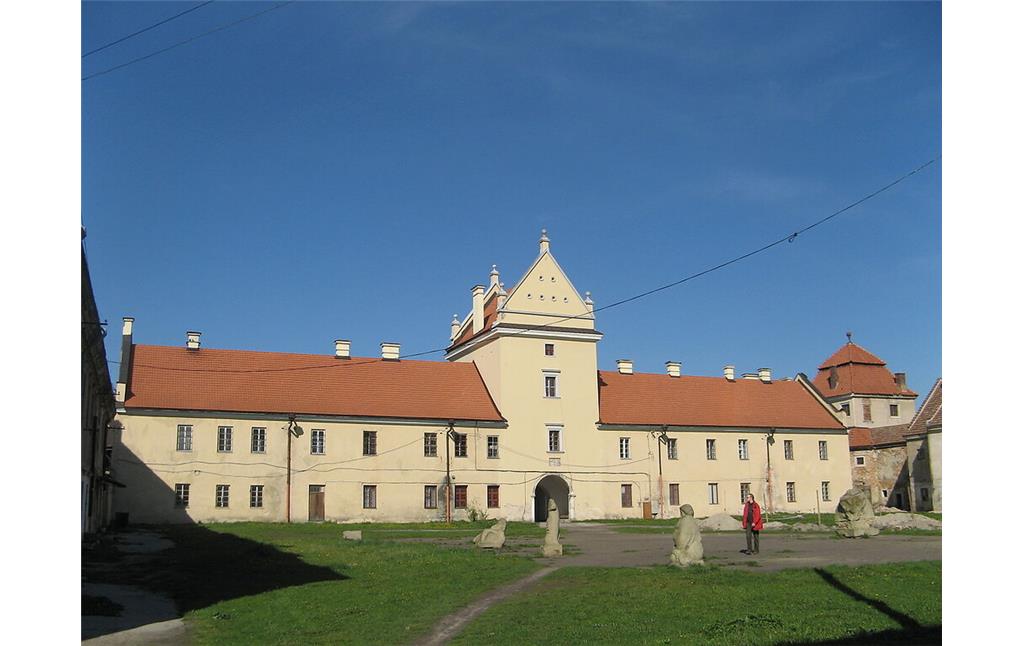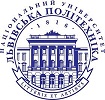
Like many similar towns in Ukraine, the architectural and historical heritage of Zhovkva is in a poor condition. But some destinations with a tourism relevancy as The New Town Hall and St. Lawrence Church were restored recently. The city park needs to be restored as an important recreation area for both tourists and locals.
Zhovkva traditionally holds the „Gazon Party at the King’s House” festival, where historical battles are played near the castle walls and in its courtyard, sports entertainment is held, a fair of traditional food and life is opened, and rock bands perform. Owners of vintage cars from Poland and Ukraine have been gathering on Rynok Square (Vicheva) for several years in a row.
Touristic and cultural relevancy of Zhovkva
Talking about the strong suits of Zhovkva, we need to mention that this city:
- is a small, historic, beautiful spot for tourists with a great potential of development.
- is close to Lviv, a city with an outstanding touristic relevancy (approximately 25 kilometers).
- has a deep history and is well-known in Ukraine and abroad for its remarkable historical and cultural heritage of Ukrainians, Poles and Jews. The central part of town has the status of State’s Historical and Architectural Reserve.
- has public open areas suitable for mass cultural and art events.
- has old international and private contacts and partnerships with cities and organizations. At this moment, St. Lawrence Church is getting reconstructed with the help of Polish finances.
- is preserved large areas of underbuilt historic castle park territory with the pond and a defense installations territory, which are restored.
- the area in which the town is located, is seismically safe and environmentally prosperous, with environmentally friendly agricultural products. In the town are no industrial businesses, which generate environmental and social problems.
- has a good transport connection that consist car and fixed-route bus connections with Lviv, settlements in the Zhovkva district and surrounding districts, and regional centers in the neighboring regions, a railway connection to the Lviv railway – border town Rava Ruska, a bus connection with the district and regional cities of Poland via the international Lviv-Warsaw route.
- has a potential of the development of the green tourism (as Zhovka is in the center of one of the largest agricultural districts of the Lviv region, which specializes in growing and processing agricultural products).
- has a developed tourism infrastructure (tourism information boards, tourist routes, excursions bureaus, cafes, hotels, transport system.
History of Zhovkva
Zhovkva is an “ideal” city of the Renaissance, which ranks second after Lviv in the number of architectural monuments in Ukraine. A settlement at the location is first mentioned in historical documents under the name Vynnyky in 1368. The city was named as Zhovkva in honor of its owner, the Polish field hetman Stanislaw Zholkiewski (1547-1629).
Zhokva got city rights in 1603 and was once famous as the city of craftsmen. Outstanding historical and architectural ensembles include the completion of the historic Market Square (today called Vicheva Square) with a castle of 1594. Since 1678 Zhovkva was the residence of King Jan III Sobieski (1629-1696) of the Polish-Lithuanian Commonwealth.
As an „ideal city” of the Renaissance, Zhovkva still consists outstanding buildings around the market square and the simultaneous function of sacred objects as a defense of the medieval city. Furthermore, tourists still can see reconstructed versions of these churches, the castle and the market square.
Zhovkva was built as a private city, that is the reason why the owners had strict plans in developing it. They spent their own money into the foundation, restorings, fortifications of the castle and attached areas.
The central square of Zhovkva is the Vicheva Square, its historical name Market Square. The origin of this name is explained by the fact that the richest and most influential burghers lived and worked here, trades and fairs, solemn processions and celebrations took place here. All sizes and proportions of the area are equal to the European standards of that time.
Zhovkva as a trading hotspot
A big city needed an appropriate quantity of craftsmen (first to fall builders to develop the city). A new fast-growing city attracted new colonizers from Poland, neighboring Ukrainian cities etc. In 1603 the first craft shop for shoemakers was created. Craftsmen of Zhovkva succeeded in their labor and the amount of their production was growing fast. At the end of the 18th century, they became the main competitors for Lviv’s craftsmen. The second who collaborated were tailors, after them were furriers, carpenters, coopers, hatters, glassmakers, goldsmiths, forgers etc. All craftsmen were obliged to pay taxes not only to the city treasury but for maintenance of the castle too. Each craftsman, depending on his qualification, was holding at least four cannonries with the ammunition.
Trading played a crucial role in the city’s development. So, as a result, merchants and craftsmen of Zhovkva took benefit from it that were given by private owners of the city. Magnate’s and king’s protection, that was accompanied with orders from a different import and local products, services, significantly supported development of the city’s economy, improving the quality of life of its citizens.
Arts in Zhovkva
Zhovkva was also known for its artists and art. At the beginning of the 18th century the Zhovkva School of Artists was founded.
Buildings with arcaded porches
In Zhovkva are the oldest buildings with arcaded porches in Eastern Europe. Such buildings were invented and widely spread among the Mediterranean cities in the era of Renaissance. Originally, they were created just for walks, but in practice porches were used as a protection from the sun.
Only one quarter remained in Zhovkva out of several similar. These buildings are inspired by the Italian spirit with its beautiful windows framings, unique-styled doors, porches and other decorations; it also kept Jewish amulets (mezuzahs).
In Ukraine such arcaded porches also exist in Kyiv and Novgorod-Siversky.
The Jewish community in Zhovkva
Zhovkva was an important Jewish center in Eastern Europe from the 17th-19th centuries, known for the prominent historical tradition of Jewish philosophical thought, literature and book-printing. This tradition ended during the Second World War, when almost all of the 4000 Jewish inhabitants of the city were murdered by Nazi Germany - only 70 of them survived the holocaust.
Summary
Zhovkva is a city of the Lviv region situated 25 kilometers north of Lviv and 33 kilometers from a Ukrainian-Polish border on the fork of international highways Lviv-Warsaw to Poland and Lviv-Kovel-Brest to Belarus and the Baltic States.
Currently, the tourist attraction of Zhovkva is mostly associated with the unique architecture and interesting history of the city. Zhovkva is well known among tourists for its history and cozy streets in Ukraine.
The city was founded at the end of the 16th century as a private fortified town and named after its founder Stanislaw Zólkiewski (1547-1620), who was one of the most accomplished military commanders in Polish history, hetman.
The cultural heritage of the city is represented mostly by three nationalities: Ukrainians, Poles and Jews. These nations built and developed Zhovkva together. The city was mainly developed by trading. Trading racks of the tailors, furriers and other craftsmen were located on the main Market (Vicheva) Square. The most active traders were Jewish and Armenians, who were trading on a large scale. The annual fairs attracted a lot of foreign merchants (for example Turks, Germans, Moldavians) because of their high-quality spices, vines, tobacco etc.
Architectural and historical objects are concentrated in the center of Zhovkva – Market Square (Zhovkva Castle, Buildings with arcaded porches, Monastery of the Basilian order, New Town Hall, St. Lawrence church, pillar of shame, Zvirynetski gates).
This city was also famous for its prominent school of painting and carving during the seventeenth and eighteenth centuries, which brought about the beginning of baroque style in Ukrainian art, and unique pieces of Ukrainian modern art in the first half of the twentieth century.
(Daria Kushnir, Lviv Polytechnic National University, 2021; Special thanks to the Center for Urban History of East Central Europe in Lviv and ukrainer.net)
Internet sources:
uma.lvivcenter.org: Vicheva Square in Zhovkva with the Monastery of the Basilian Order (1918-1939)
uma.lvivcenter.org: Vicheva Square in Zhovkva with St. Lawrence Church (left) and the Monastery of the Basilian Order (right; 1905-1910)
